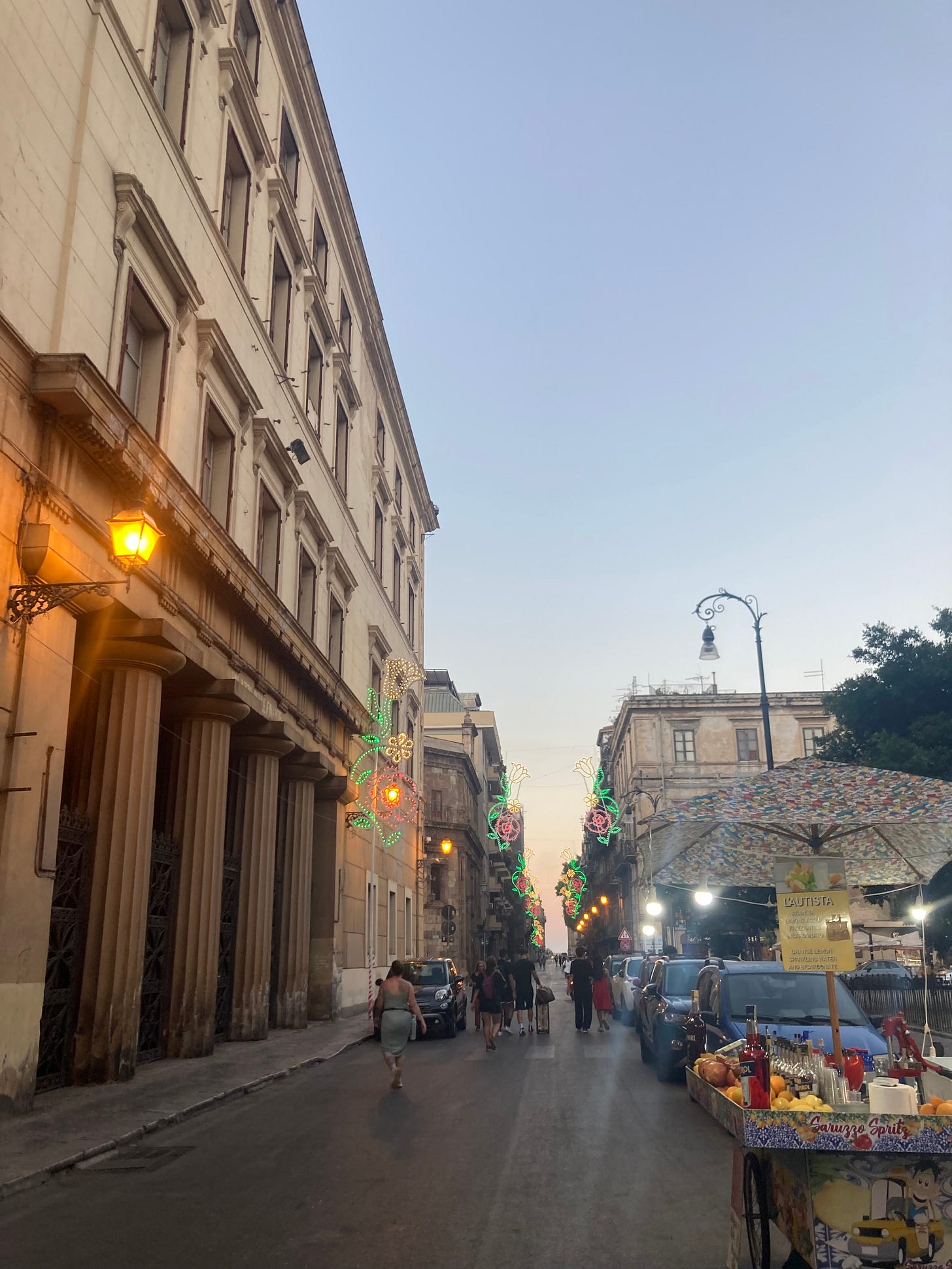I was in Palermo for the four-hundredth Festa di Santa Rosalia, marking the day when the twelfth-century hermit’s bones were found in a cave on Monte Pellegrino. The translation of her relics into the city in 1624 is credited with saving Palermo from the plague and her relics have been carried in procession each year since—Sicilians simply call it u fistinu, the festival.
In preparation, the Via Vittorio Emanuele, known locally as u Cassaru, down which floats would process on the eve of her feast to the Porta Felice by the sea, had been garlanded with lights in the shape of roses. More lights marked the route which would be taken the following day, with the procession of Santa Rosalia’s relics through the winding backstreets. At dusk they lit up the saint’s paths across the city and the air in the city smelled of mock orange and oleander—and, turning certain corners, the smoke from stigghiola (lamb or veal intestine) cooking on open grills or the pungent smell of fish left out in the sun.



